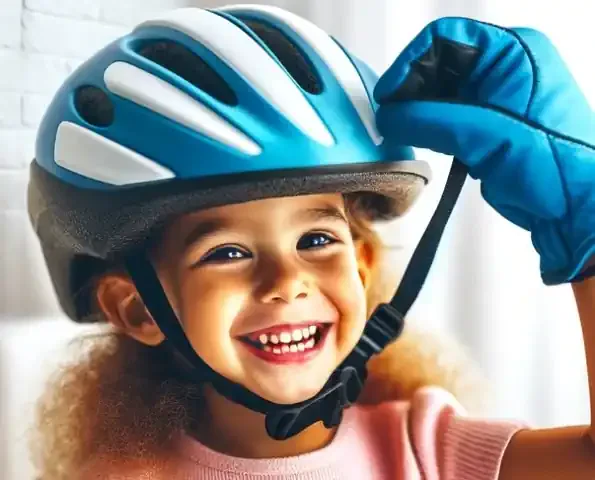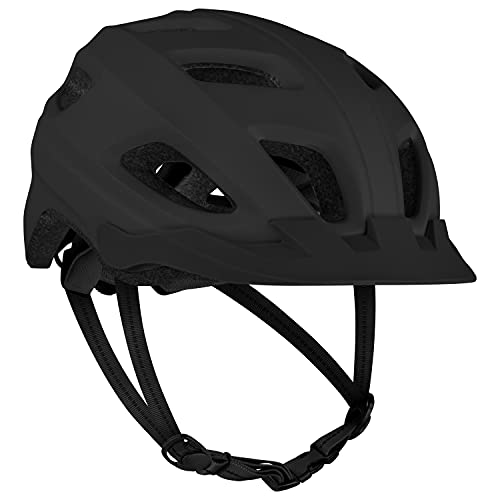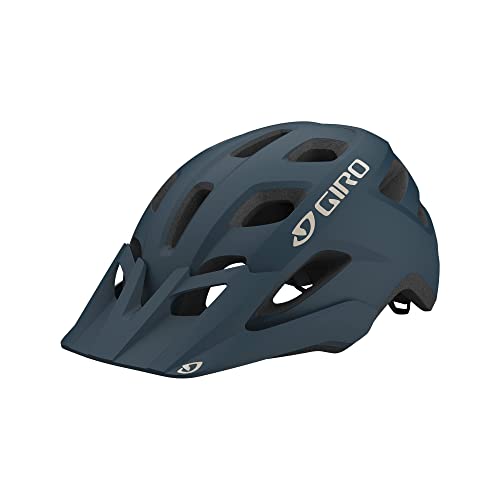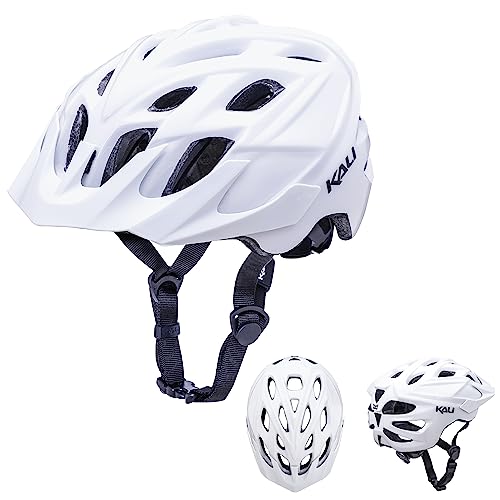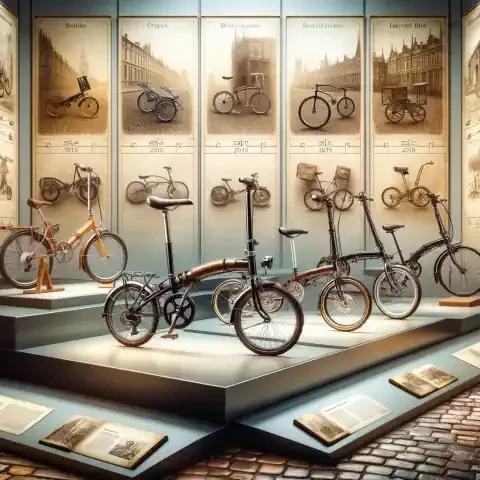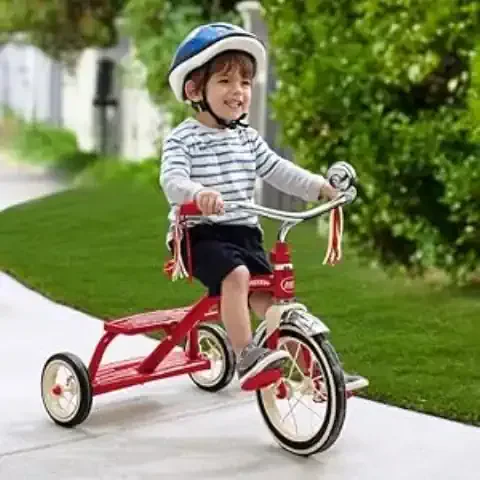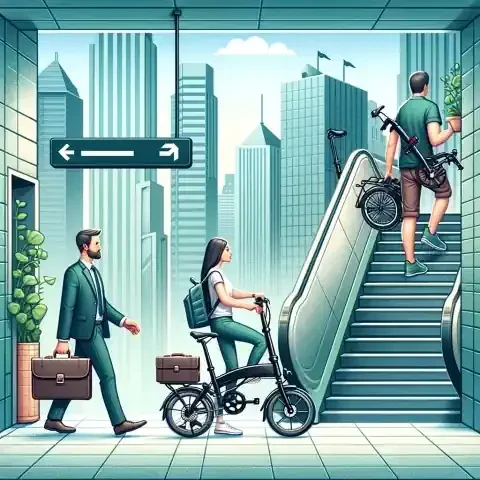Introduction: Why Bike Helmets Are Essential For Children
Cycling is a fantastic way for children to get exercise, explore their surroundings, and have fun. However, like any physical activity, it comes with inherent risks. A fall from a bike can lead to serious head injuries, and young children are particularly vulnerable due to their developing brains and smaller bodies. This is where bike helmets become absolutely crucial.
Statistics on Child Cycling Injuries
The numbers don't lie. According to the National Highway Traffic Safety Administration (NHTSA), thousands of children are injured in bicycle accidents each year in the United States alone. Head injuries are a leading cause of death and disability in these accidents. These statistics underscore the importance of taking every precaution to protect our children when they're on two wheels.
The Role of Helmets in Preventing Head Trauma
Bike helmets are designed to absorb and distribute the impact of a fall, reducing the force that reaches the head. Studies have consistently shown that helmets are highly effective in preventing serious head injuries and concussions. In fact, wearing a helmet can reduce the risk of head injury by up to 85%. This is a level of protection that no parent should ignore.
Common Misconceptions About Kids and Helmets
Despite the overwhelming evidence of their effectiveness, some parents still harbor misconceptions about kids and helmets. Some believe that helmets are uncomfortable or restrict a child's vision. Others think that their child is a careful rider and won't fall. The truth is, accidents can happen to anyone, even the most cautious cyclists. A properly fitted helmet won't hinder vision or comfort and could very well save your child's life.
Legal Requirements for Children's Helmets (Vary by Location)
Many states and localities have laws mandating helmet use for children under a certain age. Even if there isn't a law in your area, it's important to understand that these laws exist for a reason: to protect children. Familiarize yourself with the regulations in your community and make sure your child is in compliance. Remember, the law is a minimum standard – even if it's not required, a helmet is always the safest choice.
Peace of Mind for Parents
Perhaps the most compelling reason to insist on helmet use is the peace of mind it provides for parents. Knowing that your child is protected in case of a fall can alleviate a great deal of worry and anxiety. By instilling the habit of helmet wearing from a young age, you're not only protecting your child's physical well-being but also teaching them a valuable lesson about safety and responsibility.
Choosing The Right Bike Helmet For Your Child
With the importance of helmets firmly established, the next step is selecting the perfect one for your child. The sheer variety of options can feel overwhelming, but understanding the key factors will make the process much smoother.
Types of Bike Helmets (Road, Mountain, Skate, Etc.)
Bike helmets come in various styles, each designed for specific types of cycling.
Road helmets are lightweight and aerodynamic, prioritizing speed and ventilation.
Mountain bike helmets offer more coverage and protection, often featuring visors to shield from the sun and debris.
Skate helmets are designed for skateboarding, inline skating, and scooter riding, with a focus on impact resistance.
Commuter helmets blend features of road and mountain helmets, providing versatility for everyday riding.
Consider your child's primary cycling activity when choosing a helmet type. If they're unsure, a multi-sport helmet can be a good option.
Helmet Safety Standards and Certifications (CPSC, ASTM, Snell)
Not all helmets are created equal. Look for helmets that meet or exceed safety standards set by reputable organizations.
CPSC (Consumer Product Safety Commission): The minimum standard for bike helmets sold in the United States.
ASTM (American Society for Testing and Materials): Offers additional standards for specific activities, such as skateboarding.
Snell Memorial Foundation: Sets stricter standards for impact protection, often favored by competitive cyclists.
A helmet with multiple certifications demonstrates a commitment to safety and quality.
Age and Size Considerations
Children's heads come in all shapes and sizes, so it's crucial to choose a helmet that fits correctly. Most helmets are labeled with age ranges and head circumferences.
Measure your child's head circumference using a flexible measuring tape and refer to the manufacturer's sizing chart. Don't be tempted to buy a larger size for them to "grow into" – a loose helmet won't provide adequate protection.
Fit and Comfort: The Key to Helmet Effectiveness
A helmet that doesn't fit properly won't do its job. It should sit level on the head, covering the forehead and not tilting back. The straps should be snug but not too tight, forming a "V" shape under the ears.
The helmet should be comfortable enough for your child to wear without complaint. If it's too tight, it can cause headaches. If it's too loose, it might shift during a fall, leaving the head vulnerable.
Style and Design: Making Helmets Fun for Kids
Let's face it, kids are more likely to wear a helmet they actually like. Fortunately, there's no shortage of cool and colorful helmet designs to choose from. Let your child be part of the selection process, but make sure the helmet you choose meets all the necessary safety criteria.
Remember, a bike helmet is an investment in your child's safety. By taking the time to choose the right one, you're giving them the best possible protection while they enjoy their cycling adventures.
How To Properly Fit Your Child's Bike Helmet
Even the most expensive, high-tech helmet won't protect your child if it doesn't fit correctly. A proper fit is snug but comfortable, ensuring the helmet stays in place during a fall. Let's break down the steps to achieving that perfect fit.
Step-by-Step Fitting Guide
Start with the right size: As discussed earlier, measure your child's head circumference and choose a helmet that matches their size.
Position the helmet: Place the helmet level on your child's head, covering their forehead. The front edge should be about one inch above their eyebrows.
Adjust the straps: Tighten the straps until they form a "V" shape under the ears. The straps should be snug enough that you can fit one finger between the strap and their chin.
Check for movement: Gently shake your child's head from side to side and up and down. The helmet should not move or shift.
Fine-tune the fit: If the helmet feels too loose or too tight, adjust the straps or consider trying a different size.
The Two-Finger Rule: Checking for Proper Forehead Clearance
A simple way to check for proper forehead clearance is the "two-finger rule." Place two fingers horizontally between your child's eyebrows and the helmet's edge. If your fingers fit comfortably, the helmet is positioned correctly.
Adjusting The Straps for A Snug But Comfortable Fit
The straps are a crucial part of helmet fit. They keep the helmet from flying off during a fall. When adjusting the straps, make sure they're snug but not so tight that they cause discomfort or restrict your child's breathing.
The Importance of Proper Side Strap Adjustment
The side straps should form a "V" shape just below and slightly in front of the ears. This helps to stabilize the helmet and prevent it from tilting during a fall. Ensure the straps are even on both sides for optimal comfort and protection.
Common Fitting Mistakes to Avoid
Tilting the helmet too far back: This leaves the forehead exposed and vulnerable.
Wearing the helmet too loosely: A loose helmet can shift during a fall, negating its protective effect.
Straps too tight or too loose: Overly tight straps can cause discomfort, while loose straps won't secure the helmet properly.
Not adjusting the side straps: Improper side strap adjustment can lead to the helmet tilting sideways during an impact.
By following these fitting guidelines and avoiding common mistakes, you can ensure that your child's helmet provides the maximum level of protection. Remember, a well-fitted helmet is a comfortable helmet, so encourage your child to speak up if they feel any discomfort.
Teaching Your Child To Love Wearing Their Helmet
Getting your child to consistently wear their bike helmet can sometimes feel like an uphill battle. But with the right approach, you can make it a positive and enjoyable experience. The key is to start early, make it fun, and emphasize the importance of safety.
Start Early and Make It Fun
Introduce helmets as soon as your child starts riding a tricycle or balance bike. Let them choose a helmet with their favorite color or characters. Make it a fun accessory, not a chore. You can even decorate it with stickers or personalize it with their name. The earlier you establish the habit, the easier it will be to maintain as they grow.
Lead by Example: Always Wear Your Own Helmet
Children learn by observing their parents. If they see you consistently wearing a helmet while cycling, they'll be more likely to follow suit. Explain to them why you wear a helmet, emphasizing that it's not just for kids, but for everyone who rides a bike. Make it a family rule that everyone wears a helmet, no exceptions.
Explain The Importance of Helmets in Simple Terms
While you might understand the science behind helmet safety, your child doesn't need a physics lesson. Explain to them in simple terms that helmets protect their head like a shield. You can compare it to wearing a seatbelt in a car or knee pads when roller skating. Use age-appropriate language and analogies that they can relate to.
Use Positive Reinforcement and Rewards
Positive reinforcement goes a long way in establishing good habits. Praise your child when they wear their helmet without being asked. You can also create a reward system, like a sticker chart, where they earn points for consistently wearing their helmet. This can help motivate them and make helmet-wearing a positive experience.
Make Helmet Wearing a Non-Negotiable Rule
While it's important to be positive, it's equally crucial to be firm. Make it clear that wearing a helmet is a non-negotiable rule, just like looking both ways before crossing the street. Explain that they can't ride their bike without a helmet, and stick to it. Consistency is key in establishing this important safety habit.
Remember, patience and persistence are key when teaching children about helmet safety. By making it a positive, enjoyable, and non-negotiable part of their cycling experience, you're setting them up for a lifetime of safe riding.
When To Replace Your Child's Bike Helmet
Bike helmets are designed to protect against a single impact. Even if there's no visible damage, the helmet's protective foam may have compressed, reducing its effectiveness. Knowing when to replace your child's helmet is crucial for their safety.
After a Crash or Impact
If your child falls and hits their head while wearing the helmet, it's time for a replacement. The impact, even if minor, can compromise the helmet's structural integrity. Don't take any chances with your child's safety – replace the helmet immediately.
Visible Signs of Wear and Tear
Inspect the helmet regularly for signs of wear and tear. Look for cracks, dents, or any damage to the outer shell or inner lining. If you see any signs of damage, no matter how small, replace the helmet. Even minor damage can weaken the helmet's protective capabilities.
If It No Longer Fits Properly
Children grow quickly, and their helmets may not fit properly after a while. If the helmet is too loose or too tight, it won't provide adequate protection. Refer to the manufacturer's sizing guidelines and measure your child's head circumference regularly to ensure the helmet still fits correctly.
Following Manufacturer Recommendations
Most helmet manufacturers recommend replacing a helmet every 3-5 years, even if it hasn't been in a crash. The materials used in helmets can degrade over time, reducing their effectiveness. Follow the manufacturer's guidelines for replacement to ensure your child's helmet is always up to date.
Outgrowing a Helmet: When to Move Up a Size
As your child grows, they will eventually outgrow their helmet. Watch for signs that the helmet is too small, such as the front edge sitting too high on the forehead or the straps being too tight. When in doubt, refer to the manufacturer's sizing chart and measure your child's head. If they've outgrown their current helmet, it's time to move up to the next size.
By being vigilant about replacing your child's helmet when necessary, you're ensuring their safety and giving yourself peace of mind. Remember, a helmet is an investment in your child's well-being, and a small price to pay for their protection.
Additional Safety Tips For Young Cyclists
While a well-fitted helmet is the cornerstone of cycling safety, it's not the only measure you should take to protect your child. Implementing a few additional precautions can significantly reduce the risk of accidents and injuries.
Bright Clothing and Reflective Gear
Visibility is key, especially when cycling in low-light conditions or on busy roads. Dress your child in bright, eye-catching colors that are easily visible to motorists. Consider adding reflective tape or vests to their clothing and bike. This will make them stand out, even from a distance, and give drivers more time to react.
Riding Skills and Traffic Awareness
Teaching your child proper riding skills and traffic awareness is essential for their safety. Ensure they know the rules of the road, such as hand signals, stopping at intersections, and riding in the correct direction. Practice these skills with them in a safe, controlled environment before venturing onto busy streets.
Choosing Safe Riding Routes
Plan your child's cycling routes carefully. Avoid busy roads with high traffic volumes and opt for quieter streets or designated bike paths whenever possible. Consider the terrain as well, choosing routes that are appropriate for your child's skill level and the type of bike they're riding.
Supervise Young Children While Riding
Young children should always be supervised while cycling. Ride alongside them, offering guidance and support. Teach them to be aware of their surroundings and to anticipate potential hazards. As they gain experience and confidence, you can gradually give them more independence, but always prioritize their safety.
Regular Bike Maintenance Checks
A well-maintained bike is a safer bike. Regularly check your child's bike for any mechanical issues, such as loose brakes, worn tires, or faulty gears. Ensure the bike is the right size for your child and that the seat and handlebars are adjusted properly. A properly functioning bike will make riding easier and safer for your child.
By combining a properly fitted helmet with these additional safety measures, you're creating a multi-layered approach to protecting your child while they enjoy the thrill of cycling. Remember, safety should always be a priority, and these extra steps can go a long way in ensuring a safe and enjoyable riding experience for your child.
Common Questions Parents Ask About Bike Helmets For Kids
Choosing and using a bike helmet for your child can raise several questions. Here, we address some of the most common concerns parents have to help you make informed decisions about your child's safety.
How Much Should I Spend on a Helmet?
Bike helmet prices vary widely, from budget-friendly options to high-end models with advanced features. While it's tempting to opt for the cheapest option, remember that a helmet is an investment in your child's safety. Generally, helmets in the $30-$60 range offer good protection and meet safety standards. Higher-priced helmets may offer additional features like enhanced ventilation, lighter weight, or advanced impact protection technologies.
Can I Use a Hand-Me-Down Helmet?
While it might seem economical to reuse a helmet, it's not recommended. Helmets are designed for a single impact, and even if there's no visible damage, the protective foam may have compressed, compromising its effectiveness. Additionally, a used helmet may not fit your child properly, further reducing its protective capabilities. It's best to invest in a new helmet specifically for your child.
Are There Helmets With Special Features?
Yes, many helmets come with special features designed to enhance safety and comfort. Some helmets have MIPS (Multi-Directional Impact Protection System) technology, which reduces rotational forces on the brain during an impact. Others have adjustable visors to shield from the sun or integrated lights for increased visibility. Consider your child's specific needs and preferences when choosing a helmet with additional features.
What If My Child Refuses to Wear a Helmet?
If your child resists wearing a helmet, try making it a fun experience. Let them choose a helmet with their favorite color or characters. Explain the importance of helmets in simple terms, emphasizing that it protects their head like a shield. Offer positive reinforcement and rewards for wearing the helmet consistently. If the resistance persists, be firm and explain that they can't ride their bike without a helmet. Remember, consistency is key in establishing this important safety habit.
How Can I Make Sure My Child's Helmet Is Still Safe?
Regularly inspect your child's helmet for any signs of damage, such as cracks, dents, or fraying straps. Even minor damage can compromise its protective capabilities. If you notice any damage, replace the helmet immediately. Additionally, ensure the helmet still fits properly. As your child grows, the helmet may become too small and need to be replaced.
Best Bike Helmet Brands for Kids
Choosing a reputable brand is a crucial step in ensuring your child's helmet meets the highest safety standards and offers optimal protection. Here are some of the leading brands in the market, known for their quality, innovation, and child-friendly designs:
Top-Rated Brands for Safety and Comfort
Giro: Renowned for their innovative MIPS technology and comfortable fit systems, Giro offers a wide range of helmets for kids of all ages and riding styles.
Bell: A trusted name in helmets, Bell provides a variety of helmets with excellent safety ratings, stylish designs, and features like adjustable visors and MIPS technology.
Nutcase: Known for their vibrant and playful designs, Nutcase helmets are popular among kids who want to express their individuality while staying safe.
Bern: Combining style and safety, Bern helmets offer a unique look with their visor-like brim and are available with MIPS technology for added protection.
Smith: Specializing in helmets for active lifestyles, Smith offers lightweight, well-ventilated helmets with MIPS technology and a focus on comfort and performance.
Budget-Friendly Options That Don't Sacrifice Protection
Schwinn: A well-known brand in the cycling world, Schwinn offers affordable helmets that meet safety standards and come in a variety of sizes and colors.
Razor: While primarily known for scooters, Razor also offers budget-friendly helmets that are suitable for cycling and other activities.
Bell Local: This line from Bell offers stylish and affordable helmets with basic safety features, making them a good option for casual riders.
Stylish Helmets That Kids Will Actually Want to Wear
Thousand Jr.: These helmets prioritize style and comfort, featuring a sleek design, magnetic buckle, and a removable visor. They are also available with MIPS technology.
Bontrager Jet WaveCel: This helmet from Trek features WaveCel technology, a unique cellular structure designed to absorb impact energy. It's available in various fun colors and patterns.
Little Nutty by Nutcase: This line from Nutcase offers adorable designs with animal themes, bright colors, and whimsical patterns that kids will love.
Helmets with Innovative Safety Features
MIPS (Multi-Directional Impact Protection System): This technology reduces rotational forces on the brain during an angled impact, enhancing protection against concussions.
WaveCel: This unique cellular structure from Bontrager crumples and glides to redirect impact energy away from the head.
Koroyd: A honeycomb-like structure that absorbs more energy than traditional EPS foam, providing enhanced impact protection.
Where to Buy Kids' Bike Helmets
Kids' bike helmets can be purchased at a variety of retailers, including:
Local Bike Shops: Bike shops offer expert advice and fitting assistance to ensure you choose the right helmet for your child.
Sporting Goods Stores: Many sporting goods stores carry a selection of kids' bike helmets from various brands.
Online Retailers: Online retailers like Amazon, REI, and Backcountry offer a wide range of helmets, often with customer reviews to help you choose.
Remember, the best helmet is the one your child will actually wear. Involve them in the selection process, prioritize safety features, and choose a brand you trust. With the right helmet, your child can enjoy their cycling adventures safely and confidently.
Making Helmet Safety A Priority For Your Child
Ensuring your child's safety while cycling is a multifaceted endeavor, and a well-chosen, properly fitted bike helmet is a cornerstone of that effort. By understanding the importance of helmets, selecting the right one, and fostering a positive attitude towards helmet use, you're giving your child the best possible protection while they explore the world on two wheels.
Recap of Key Points
Let's revisit the crucial points we've covered:
Helmets are essential: They drastically reduce the risk of head injuries in the event of a fall.
Proper fit is paramount: A loose or ill-fitting helmet won't provide adequate protection.
Replacements are necessary: Helmets should be replaced after any impact or if they show signs of wear and tear.
Choose the right helmet: Consider your child's age, size, riding style, and personal preferences.
Make it fun: Encourage helmet use by letting your child choose a design they love and by making it a positive experience.
Importance of Educating Children on Bike Safety
Beyond helmets, educating your child about bike safety is paramount. Teach them the rules of the road, how to navigate traffic safely, and the importance of being aware of their surroundings. Enroll them in cycling classes or workshops if available, and practice riding skills with them in a safe environment.
Encouraging a Lifelong Love of Cycling With Proper Safety Practices
By emphasizing safety from the beginning, you're not just protecting your child, you're fostering a lifelong love of cycling. When children feel safe and confident on their bikes, they're more likely to continue riding as they grow older. Cycling can become a cherished hobby, a mode of transportation, and a source of joy and exercise for years to come.
Final Thoughts and Recommendations
Remember, a helmet is not just a piece of gear, it's a symbol of your commitment to your child's safety. It's a small investment that can have a profound impact on their well-being. Make helmet-wearing a non-negotiable part of their cycling routine, and lead by example by always wearing your own helmet. By prioritizing safety, you're giving your child the freedom to explore, learn, and grow while keeping their most precious asset – their head – protected.
